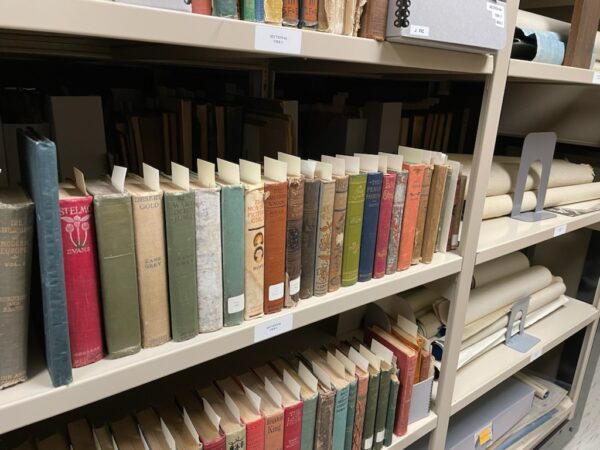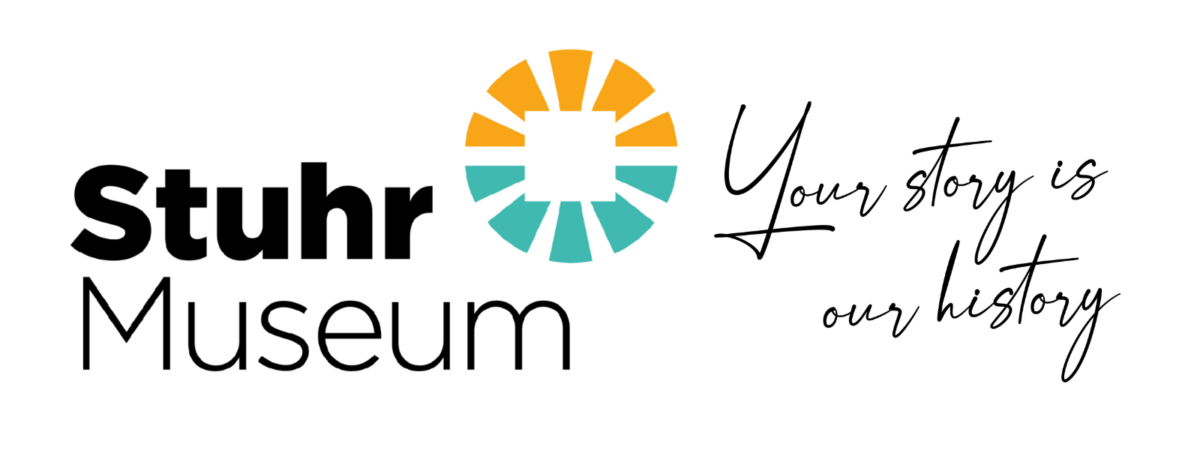
Research &
Collection
Research
The Library and Archives of the Stuhr Museum are located in the Edgar and Frances Reynolds Research Center. The Reynolds Center was made possible by generous grants from the Edgar and Frances Reynolds Foundation, Inc. and the Peter Kiewit Foundation.
The Research Department is open by appointment to all individuals interested in historical research and study. The department also offers seminars, workshops, and programs in genealogical and historical research; using local history in the classroom; preservation of family heirlooms; and interpreting family heirlooms, including photographs, textiles, and many other objects.
Hours:
Please contact the Research Department to make an appointment at least 72 hours prior to your visit.
Monday – Friday: 9 a.m. to 4 p.m.
Saturday: By appointment only
Sunday: CLOSED
Contact us: research@stuhrmuseum.org
More about the Research Department
Collection
Stuhr Museum houses over 140,000 2D and 3D objects in our collection. With over 200 acres of property and over 100 structures on the museum grounds, Stuhr Museum exhibits numerous artifacts at any one time. Each of the objects on exhibit illustrates a unique component of the history of the Hall County and Central Nebraska region from the 1840s until 1930 and the individuals who called this region of the country their home. The famous Stuhr building, named for the founder of the museum Leo Stuhr, was created by renowned architect Edward Durell Stone. His son, Edward Durell Stone Jr., worked with his father to design the iconic landscape which surrounds the museum on all sides with water. The building is home to 15 permanent exhibits made up of historic Hall County artifacts, as well as 10 yearly rotating exhibits that highlight a variety of topics in either history or local artists and artwork.
Gus Fonner Memorial Rotunda
Many other buildings on Stuhr Museum grounds exhibit artifacts from different aspects of Hall County life and history. The Gus Fonner Memorial Rotunda houses the immense historical artifact collection of former Stuhr Museum benefactor Gus Fonner. The architecture of this building offers a clue to the contents exhibited inside, as the Rotunda was designed in the shape of a spoked, pioneer wagon wheel. The Fonner collection consists of 19th and early 20th century artifacts from the Western United States and is truly a sight to behold. The collection is comprised of military and civilian weapons, Southwestern United States Native American clothing, pottery and artwork, and accessories from the American home at the turn of the 20th century.
Farm Machinery & Antique Auto Collection
The Farm Machinery & Antique Auto Collection is located in its own building on the Stuhr Museum grounds as a salute to agriculture in the history of Nebraska. This collection of antique tractors, large farm equipment, and automobiles dates to the late 19th and early 20th centuries and is well known throughout the state and country as the home of several highly rare agricultural artifacts of this region and era. Each of the vehicles exhibited in this collection is in excellent condition and was driven into place in the building that they are currently displayed in.
Photography Collection
The photography collection at Stuhr Museum is comprised of some 50,000 photographs of the Hall County and Central Nebraska region. Over 28,000 of these photos originate from the work of long time Grand Island Nebraska photographer Julius Leschinsky, as Stuhr Museum houses the original glass plate negatives from his career. There are also sizeable collections of photographs from Hall County photographers Michael Murphy, Henry Locke, and Jack Bailey. These photographs capture diverse scenes from everyday life in Nebraska during the late 19th and early 20th centuries. The photos document scenes from rural and urban settings; portrait photographs of men, women, and children from all walks of life; historic buildings and the businesses once housed within them; countless social and fraternal organizations; and all manner of heartfelt moments between friends and loved ones. The Stuhr Museum photography collection is a priceless treasure that all residents of central Nebraska are lucky to have available to them.
Object Donation Procedures
If you are interested in donating an item to the Stuhr Museum, please read the policy and procedures outlined below.
Policy & Procedures
- If you would like to donate an object to the Stuhr Museum collections, please make sure that you first have the legal possession of that object and have the legal authority to offer the donation.
- Please contact a member of the curatorial staff at Stuhr Museum by either email or phone with any information you may have about the object(s) you would like to donate including photographs, family history, or other relevant details. The information that you provide about your object will be a huge benefit to our curatorial staff and will be a help during the donation process.
- The Stuhr Museum Collections Committee meets at the beginning of each month and votes on every object offered for donation to Stuhr Museum during the previous month. The objects offered for donation will be accepted or denied based on several factors including but not limited to, the amount of collection storage space, relevance to the museum mission, the necessity of the object to the collection and the avoidance of redundancies, the condition of the object(s) being offered, etc.
- Once the Collections Committee has made their decision, our curatorial staff will reach back out to you with the decision of this committee and will either set up an appointment with you to donate your object(s), or if the donation has been denied, our staff will offer you recommendations for other institutions to consider donating your objects to.
Contact Information
Please submit all inquiries to one of the following members of the curatorial staff:
Megan Sharp – Curator msharp@stuhrmuseum.org ext. 244
